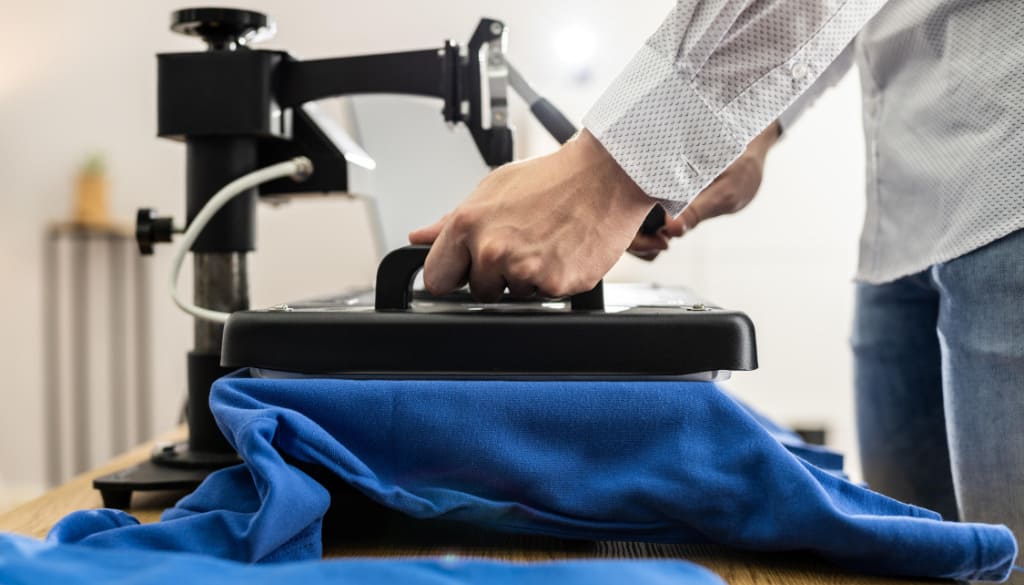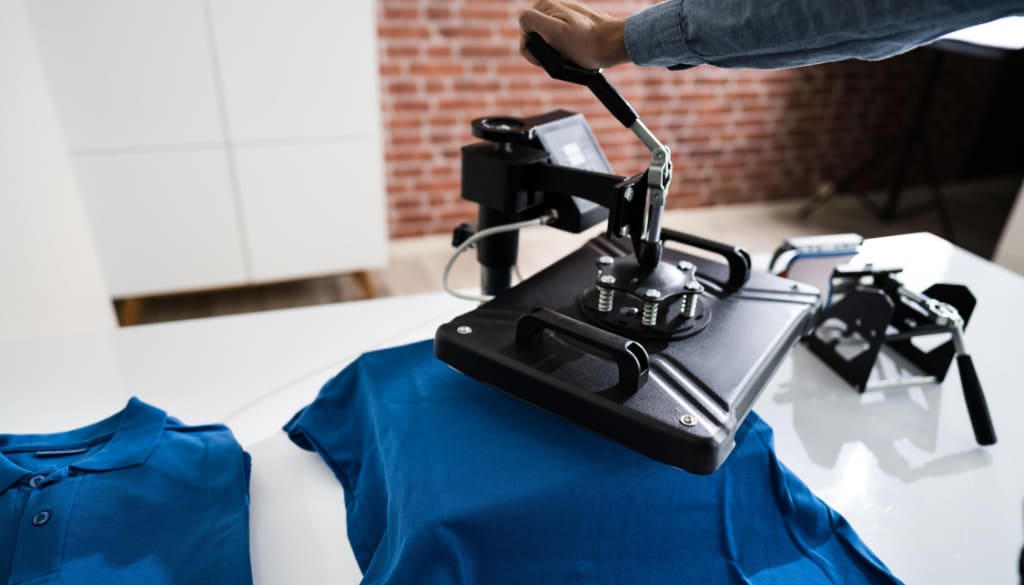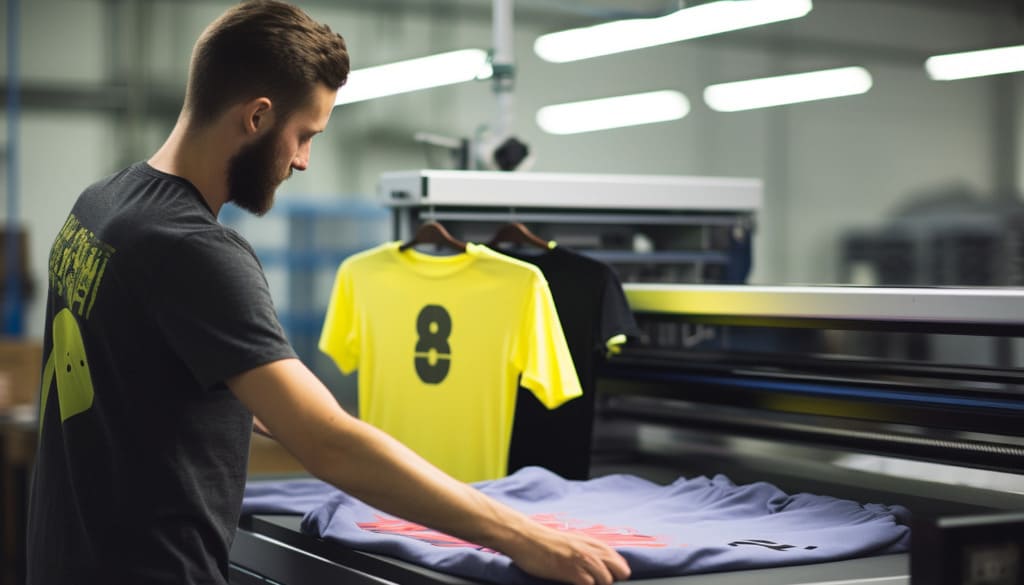Are you running a Print On Demand (POD) T-shirt business and unsure which printing technology to choose for optimal quality and cost-efficiency? In 2025, with the booming personalized T-shirt market, understanding the most commonly used printing methods – such as screen printing, heat transfer, DTG, DTF, vinyl, and embroidery is crucial for POD sellers to stay competitive. This article provides a comprehensive overview of the most popular types of shirt printing today, comparing the pros and cons of each method and offering guidance on choosing the right technology for your business needs.
Overview of Current T-Shirt Printing Demand

As E-commerce continues to grow rapidly, personalized consumer trends are increasingly popular. One sector benefiting directly from this trend is on-demand T-shirt printing. Modern consumers no longer want mass-produced designs; they desire T-shirts that reflect their personality, message, or preferences. This presents a golden opportunity for the POD model to thrive and capture the market.
Platforms like Etsy, Amazon, TikTok Shop… have become fertile ground for POD sellers. Among the various products, T-shirts consistently top the list due to their versatility (wearable year-round, easy to style, suitable for many occasions), low production costs, and nearly limitless design possibilities. Sellers can easily launch hundreds of designs targeting niche markets such as humor, animals, professions, sports, or pop culture.
According to 2025 consumer trends, buyers are not only focused on design and aesthetics but also place increasing importance on print quality, color durability, and wearing comfort. This shift in consumer expectations requires POD sellers to have a solid understanding of various T-shirt printing methods, including Silkscreen printing, Heat Transfer, Direct to Garment (DTG), Direct to Film (DTF), Vinyl printing, and Embroidery. Each technique comes with its own set of advantages and limitations, making it suitable for specific designs, fabric types, and production scales.
In the face of growing global competition in the POD market, choosing the right printing technology is not just a matter of product quality – it directly impacts your profit margin, brand perception, and scalability. For instance, if you’re targeting customers who prefer intricate, colorful designs, DTG or DTF printing will be your top choice. On the other hand, if you’re producing uniforms, corporate T-shirts, or designs with simpler color schemes, Silkscreen or Embroidery may offer better efficiency and result.
Most Popular Types of Shirt Printing in 2025

Here are the six most widely used types of shirt printing in 2025, helping POD sellers choose the best fit for their business models:
1. DTG (Direct to Garment) Printing
DTG printing is a digital printing technology that prints directly onto fabric, similar to printing on paper. It uses water-based inks sprayed directly onto the shirt and cured with heat.
Pros
- Superior image quality: Enables highly detailed prints, photo-realistic images, vibrant colors, and smooth gradients.
- Unlimited colors: No extra cost for more colors.
- Soft feel: Ink absorbs into the fabric, creating a soft, breathable feel.
- Ideal for POD: Perfect for one-off orders and on-demand production. No complex setup needed.
- Eco-friendly: Uses water-based, low-impact inks.
Cons
- Higher cost per item: More expensive than screen printing for bulk orders.
- Moderate durability: May not match traditional screen printing on dark garments if underbase isn’t applied properly.
- Best on cotton: Works best on 100% cotton or cotton-rich blends; not ideal for polyester.
- Slower speed: Not suitable for large-scale mass production.
Best for POD Sellers when: You want to offer premium, complex designs, photo prints, and emphasize comfort. This is the gold standard for high-quality POD products.
2. Silkscreen Printing
Silkscreen (or screen printing) is one of the oldest and most widely used T-shirt printing techniques. It uses a mesh screen and stencil (one per color) to transfer ink onto the shirt.
Pros
- High durability: Long-lasting prints that withstand frequent washing.
- Vibrant colors: Especially effective on dark garments.
- Cost-effective in bulk: Low cost per unit when printing 50–100+ shirts due to amortized setup costs.
- Versatile fabric use: Suitable for many fabric types.
Cons
- High setup cost: Requires separate screens for each color, not suitable for small orders.
- Limited detail: Difficult to reproduce fine details, gradients, or photo-realistic images.
- Color limitations: Each additional color increases cost and complexity.
Best for POD Sellers when: You receive bulk orders with simple, limited-color designs. However, it’s rarely used in standard POD models due to batch production requirements.
3. Heat Transfer Printing
This method uses heat to transfer images from special transfer paper to the garment. Designs are printed in reverse on transfer paper using specialized inks and then pressed onto the shirt with a heat press.
Pros
- Great for small runs: Perfect for small or one-off orders—ideal for POD.
- Prints complex images: Can easily handle detailed, colorful designs and photo prints.
- Versatile fabrics: Works on cotton, polyester, and blends.
- Quick setup: No need for screens or plates.
Cons
- Lower durability: May crack or fade over time if not handled or produced properly.
- Stiff feel: Transfer areas can feel thick or rigid, especially with large designs.
- Color inconsistencies: May vary depending on heat and fabric type.
Best for POD Sellers when: You want to print colorful, complex designs in small quantities. A popular mid-range choice for personalized POD products.

4. Vinyl Printing (Decal)
Vinyl printing involves cutting designs out of colored vinyl sheets and heat pressing them onto garments.
Pros
- Bold colors: Produces vibrant, glossy finishes (depending on vinyl type).
- Durable: Resistant to cracking, fading, and peeling.
- Ideal for simple designs: Great for text, numbers, and logos.
- Special effects: Includes glitter, reflective, glow-in-the-dark, etc.
- Good for small batches: Easily produces one-off items.
Cons
- Limited detail and colors: Not suitable for complex designs or gradients. Each color requires a separate layer.
- Thick texture: Feels heavier and less breathable than other methods.
- Risk of peeling: If not applied correctly.
Best for POD Sellers when: You specialize in sportswear, team shirts, or simple typographic designs. Excellent for bold, durable elements.
5. Embroidery
Embroidery is not technically printing – it involves stitching designs directly into the fabric using programmed industrial embroidery machines.
Pros
- Elegant and premium look: Creates professional, high-end products.
- Extreme durability: Will not crack, fade, or peel can withstand rigorous washing.
- 3D texture: Embroidered threads give a raised, tactile finish.
- Ideal for polos, jackets, hats: Common in higher-end apparel.
Cons
- High cost: Both setup and per-unit costs are high.
- Limited detail and colors: Small details and gradients are hard to replicate.
- Time-consuming: Slower production time.
- Not for large designs: Can distort fabric and look bulky.
Best for POD Sellers when: You’re targeting premium segments with polos, jackets, and branded items. Ideal for refined and durable branding.
6. DTF (Direct to Film) Printing
DTF printing is a rapidly emerging technology in the POD T-shirt industry. It prints designs onto PET film with special DTF inks and hot-melt adhesive powder, then heat presses the film onto the garment.
Pros
- Highly versatile: Prints on almost any fabric – cotton, polyester, blends, nylon, leather, etc.
- Vivid colors and detail: Perfect for vibrant, high-resolution photo-quality prints.
- Excellent durability: Stretchable, fade-resistant, and peel-resistant. Often more durable than DTG or heat transfer.
- Moderately soft feel: Thinner and softer than traditional heat transfers.
- POD friendly: Great for one-offs and medium runs. No complex setup.
Cons
- Relatively high cost: Slightly more expensive per print than heat transfer but competitive with DTG.
- Special equipment needed: Requires a DTF printer and powder-curing station costly if self-producing.
- Slight glossiness: Some DTF prints may appear a bit shiny depending on materials.
Best for POD Sellers when: You want a flexible, high-quality printing method that works on all fabrics. DTF is becoming a serious contender against DTG.
Comparison Table of T-Shirt Printing Technologies
| Criteria | DTG | Screen Printing | Heat Transfer | Vinyl | Embroidery | DTF |
| Durability | Good | High | Medium | Good | Excellent | Excellent |
| Print feel | Very soft | Soft to medium | Slightly stiff | Stiff | Raised, firm | Soft-medium |
| Detail | Excellent (photo) | Average | Good (photo) | Poor | Poor | Excellent (photo) |
| Color range | Unlimited | Limited | Unlimited | Few | Limited | Unlimited |
| Fabric types | Cotton, cotton-rich | Versatile | Versatile | Versatile | Best on thick fabric | All types |
| Order size | Small | Large (50–100+) | Small | Small | Small, business use | Small to medium |
| Cost per item | High | Low (bulk), high (small) | Medium | Low (simple) | Very high | Medium-High |
| Production speed | Medium | Medium | Fast | Fast | Slow | Medium |
| Eco-friendliness | High (water-based inks) | Medium | Medium | Medium | High (no inks) | Good (low waste) |
| POD suitability | Very suitable | Not (unless bulk) | Yes | Yes (simple) | Yes (premium) | Very suitable |
Choosing the Right Printing Method for Your Business

As a POD seller, choosing the right printing technology is a strategic decision that impacts product quality, cost, and competitiveness. Consider the following:
- Product type & design:
- Complex/photo designs: DTG and DTF are ideal. DTG for softness, DTF for durability and fabric versatility.
- Simple text/logos: Vinyl or screen printing (if bulk). Vinyl stands out; screen is cost-efficient at scale.
- Premium apparel (polos, hats): Embroidery is unmatched.
- Customer segment & price point:
- High-end buyers: DTG and embroidery meet quality expectations.
- Budget-conscious personalization: Heat transfer or DTF are strong options.
- Large event/uniform orders: Screen printing is most economical.
- Production cost & profitability:
- POD model (small batches): DTG and DTF excel due to low setup and stable cost-per-unit.
- Bulk order potential: Screen printing delivers the highest margins.
- Turnaround time:
- DTG, DTF, heat transfer, and vinyl offer fast production ideal for POD.
- Screen printing and embroidery require more prep and time.
- POD platform compatibility:
- Most POD services (FlashShip, Printify, Gelato, CustomCat, etc.) use DTF and DTG printing as standard. Some offer embroidery for selected products. Check your POD provider’s printing options to ensure consistent quality.
With the rapid growth of personalized fashion and the POD model, choosing the right T-shirt printing method is essential to optimize costs, enhance product quality, and improve customer satisfaction. Whether you’re selling on Etsy, Amazon, TikTok Shop, or elsewhere, understanding the printing techniques will help you develop an effective strategy, stay competitive, and maximize revenue.
If you’re looking for a reliable printing partner offering end-to-end support – from printing, fulfillment, to fast shipping – FlashShip is your ideal choice. With a professional and flexible POD seller support ecosystem, we are ready to accompany you on your sustainable business journey.
Contact us at (+84) 943 024 337 or visit our website: seller.FlashShip.net for detailed consultation, instant quotes, and to begin building your own brand with FlashShip.

